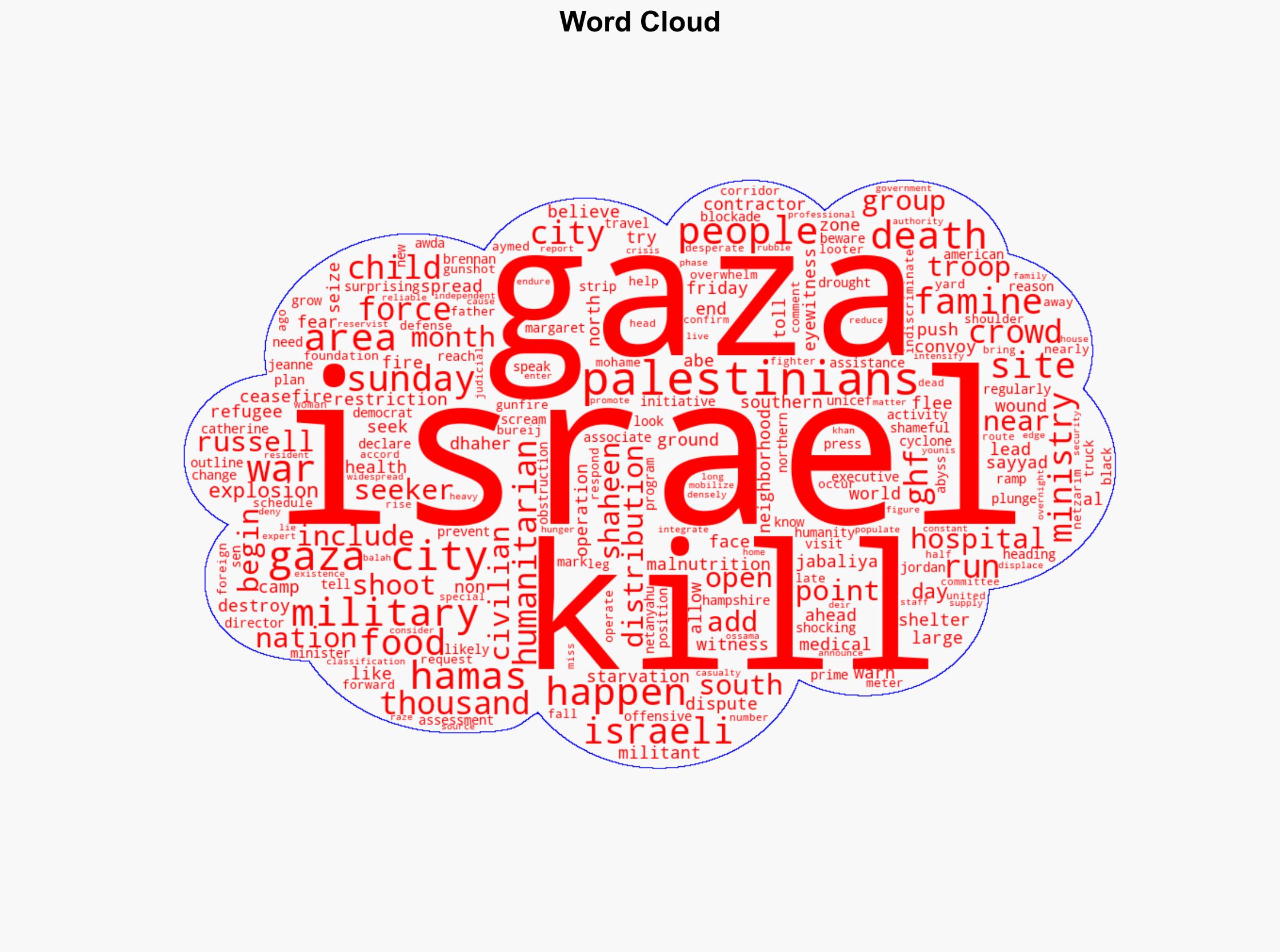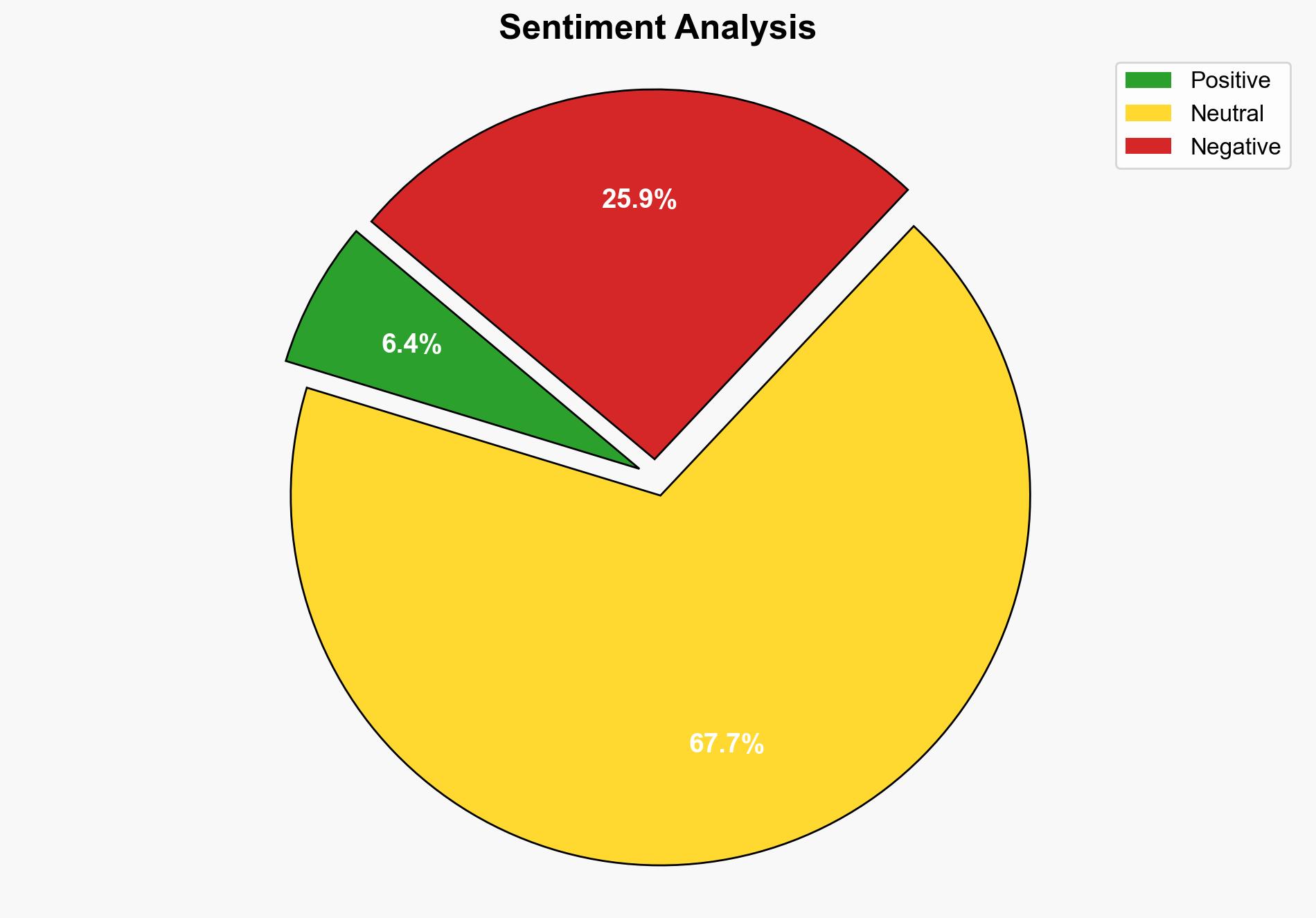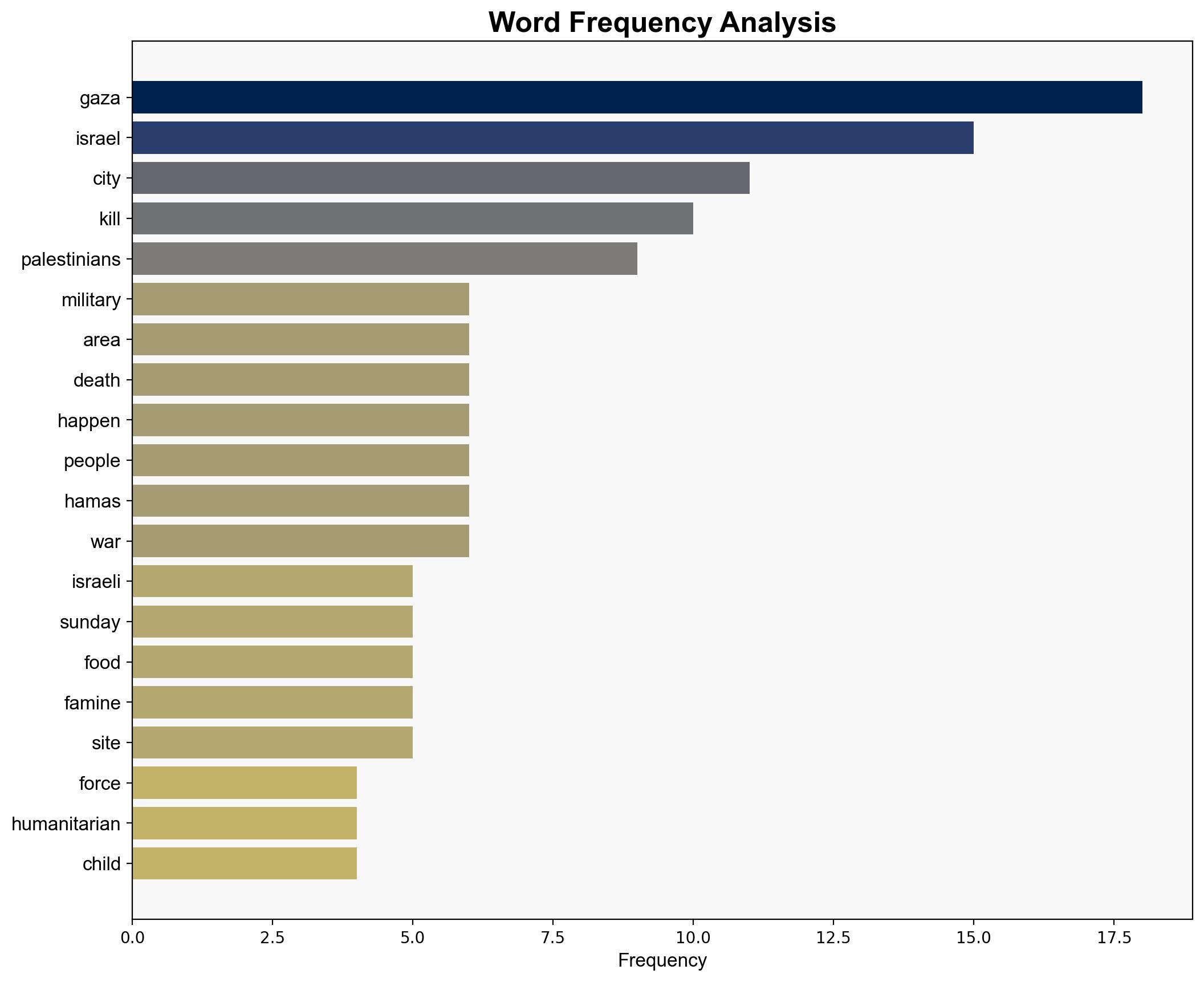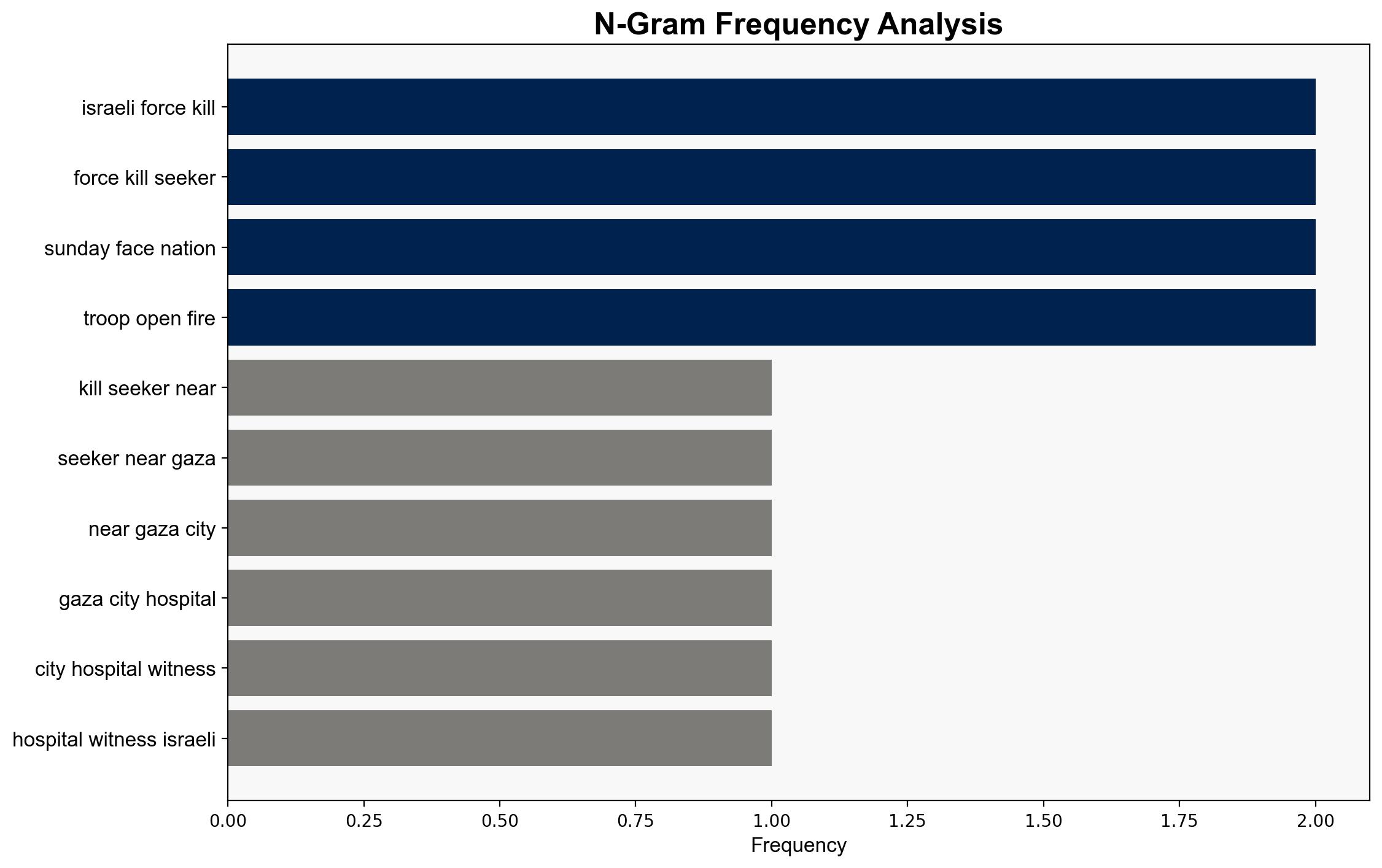Israeli forces kill 4 aid seekers near Gaza City hospital and witnesses say – CBS News
Published on: 2025-08-24
Intelligence Report: Israeli forces kill 4 aid seekers near Gaza City hospital and witnesses say – CBS News
1. BLUF (Bottom Line Up Front)
The most supported hypothesis is that the incident involving the killing of aid seekers is a result of heightened military tensions and operational errors amid a complex humanitarian crisis. Confidence level is moderate due to conflicting reports and the politically charged environment. Recommended action includes diplomatic engagement to de-escalate tensions and independent investigations to clarify events.
2. Competing Hypotheses
1. **Operational Error Hypothesis**: The deaths resulted from an operational error by Israeli forces amid heightened security measures and confusion at the distribution site.
2. **Intentional Use of Force Hypothesis**: The incident was a deliberate action by Israeli forces to deter movement in a militarized zone, possibly to maintain control over the area and prevent aid distribution that could bolster opposition groups.
3. Key Assumptions and Red Flags
– **Operational Error Hypothesis** assumes that the Israeli forces did not intend to target civilians and that the incident was unintentional. Red flags include the lack of immediate response from Israeli military sources and conflicting eyewitness accounts.
– **Intentional Use of Force Hypothesis** assumes a strategic motive behind the use of force, possibly to maintain control. Red flags include potential bias in witness reports and the absence of corroborating evidence from independent sources.
– The intelligence lacks direct statements from Israeli military officials and independent verification of events, raising concerns about the reliability of the source.
4. Implications and Strategic Risks
– **Escalation Risk**: Continued incidents could lead to further escalation in the region, increasing the risk of broader conflict.
– **Humanitarian Impact**: The incident exacerbates the humanitarian crisis, potentially leading to increased international pressure and intervention.
– **Geopolitical Tensions**: The event could strain Israel’s relations with neighboring countries and international bodies, impacting diplomatic and economic engagements.
5. Recommendations and Outlook
- **Immediate Diplomatic Engagement**: Encourage dialogue between Israeli and Palestinian authorities to de-escalate tensions and prevent further incidents.
- **Independent Investigation**: Advocate for an impartial investigation to establish facts and accountability, reducing misinformation and bias.
- **Humanitarian Access**: Facilitate international efforts to ensure safe and unhindered access to humanitarian aid in affected areas.
- **Scenario Projections**:
- **Best Case**: Successful diplomatic interventions lead to a ceasefire and improved humanitarian conditions.
- **Worst Case**: Escalation into broader conflict with significant civilian casualties and regional instability.
- **Most Likely**: Continued sporadic violence with international calls for restraint and humanitarian aid.
6. Key Individuals and Entities
– Catherine Russell
– Jeanne Shaheen
– Prime Minister Netanyahu
– Mohame Abe
– Aymed Sayyad
7. Thematic Tags
national security threats, regional focus, humanitarian crisis, conflict resolution





